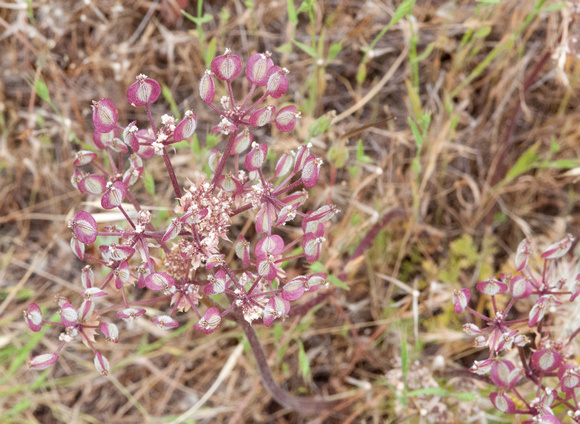Woolly-fruited Lomatium (Lomatium dasycarpum ssp. dasycarpum) from Above
ID by Alice Cummings & Toni Corelli. This is the plant with the two genera of ants on it at the same time.
L. dasycarpum ssp. d has many common names. The JRBP Vascular Plant List calls it Wolly-fruited Lomatium, as does Toni Corelli, Flowering Plants of Edgewood Natural Preserve. I have also seen it called Lace Parsnip, Hog Fennel, and Woolly Lomatium. The CalPhotos photo database goes wild, adding Woolyfruit Desertparsley. It is a perennial herb, native to California and found from the north to the south here (all of the counties bordering the ocean, and many others, not the Sierra Nevada), but only slightly beyond the borders of California. Toni Corelli says the roots were used medicinally for fevers & lung problems. The milky sap that oozes from spring roots has been used as a skin-moisterizing agent. Natives are said to have baked the roots for food.


